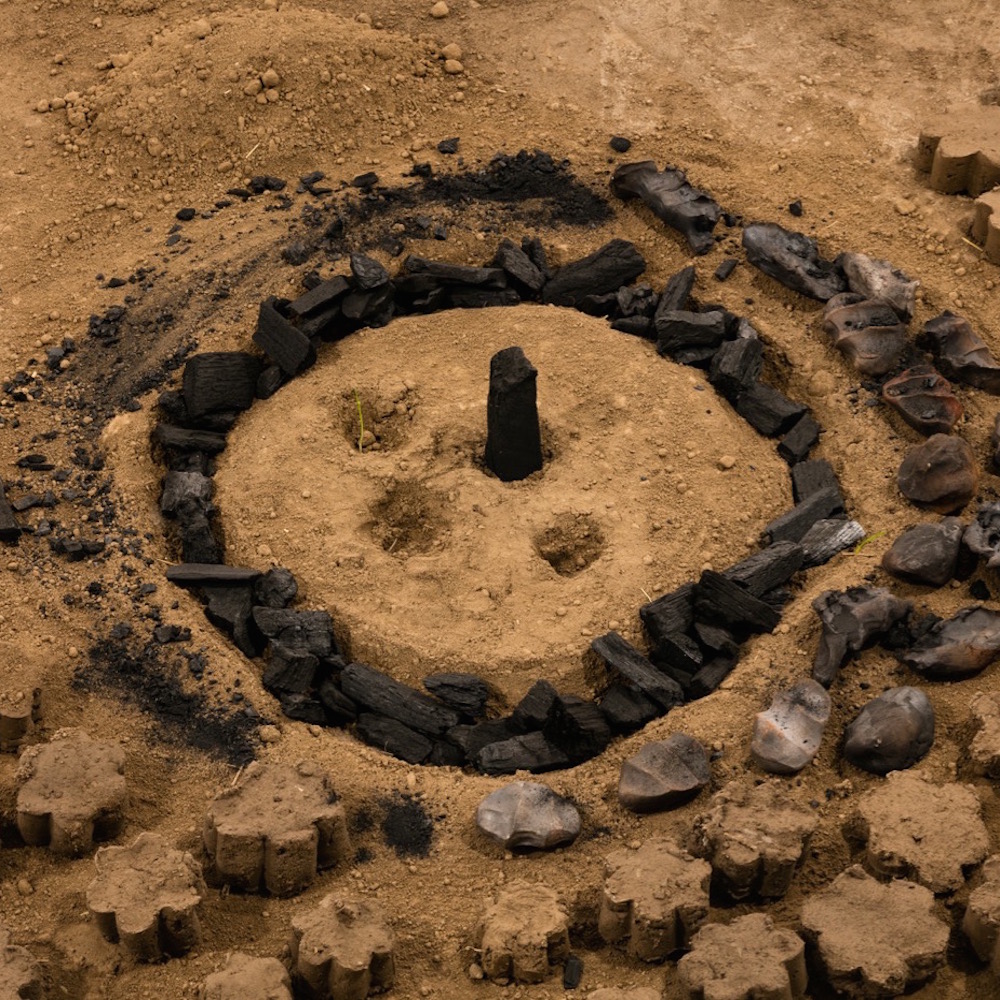BROOKLYN — Dineo Seshee Bopape was born in 1981 in South Africa. She attended the Durban Institute of Technology for her bachelor’s tech degree and Columbia University for her MFA. Her first show, ever, in the U.S. took place recently at Brooklyn’s Art in General, sa ____ ke lerole, (sa lerole ke ___) (November 19, 2016 – January 14, 2017).
Above image: Dineo Seshee Bopape, sa ____ ke lerole, (sa lerole ke ___) (Exhibition view), 2017. Photographs by Charles Benton, courtesy of the gallery.
We don’t often write about scent in contemporary ceramic art, so this line from a review in HyperAllergic stood out for us:
First, you encounter the smell of sage. It’s been burnt here, as though the room has been smudged. The space is also full of the aroma of earth, a round scent that strikes you as wholesome and nourishing. Then you see why: there are huge squares of earth, like plots of land excavated in one fell swoop. You encounter the earth and sense that it’s very much like a body: it has weight, presence, and can be exhausted, wrung out, left shrinking in the bleaching sun.
The gallery states of the show:
Dineo Seshee Bopape is known for a practice that combines a digital and analog aesthetic, as well as natural and synthetic elements such as plants, wood, mirrors, and video monitors. In sa ____ ke lerole, (sa lerole ke ___) which is partly inspired by her recent project for the 32nd Bienal de São Paulo, Bopape explores the complex sets of relationships and tensions that arise when considering land from the varied perspectives of gender and maternity, history and the politics of place, memory and the metaphysics of self and presence.
In this new work, uterus forms, soil, clay, charcoal, flowers, herbs, crystals and ash alongside projected images of her hands holding or squeezing lumps of clay, bring forth a range of associations, from the extraction from the earth of minerals and other substances, to the larger topic of the Anthropocene, to what the land signifies beyond its sheer materiality. The idea of sovereignty resonates through references to the self, (female) body and land, and the subject of land ownership, occupation, absence and reclamation.
Bopape sees the land as both a container of memories and histories, and a host for life and death. Her recent work questions what memories are embedded in the land, what ‘presences’ it holds, and how these might be communicated or sensed. In this commission, she experiments further with these ideas, using the soil as a conduit for sound to ‘soothe’ the soil/compressed dust.
Holes in the soil act both as voids—that disrupt surface, continuity, and memory—and as containers. In sa ____ ke lerole, (sa lerole ke ___), there are also formal references to the games Morabaraba and Diketo that make use of rocks and holes, with rocks shifting in and out of holes, depressions and pits. In this respect, Bopape’s working process is not linear, but rather oscillates across a spectrum of concerns. “What is remembered and what is forgotten? What matters and what does not? What is visible and what is invisible?” These concerns are consistent with her approach to matter itself: Bopape describes the clay she works with as something that can be formed into an object, but that can also disintegrate back to dust and a kind of nothingness, echoing the SePedi title which can be translated literally as that which is of ___is dust, (that which is of dust is____).
Do you love or loathe these works of contemporary ceramic art? Let us know in the comments.






Add your valued opinion to this post.